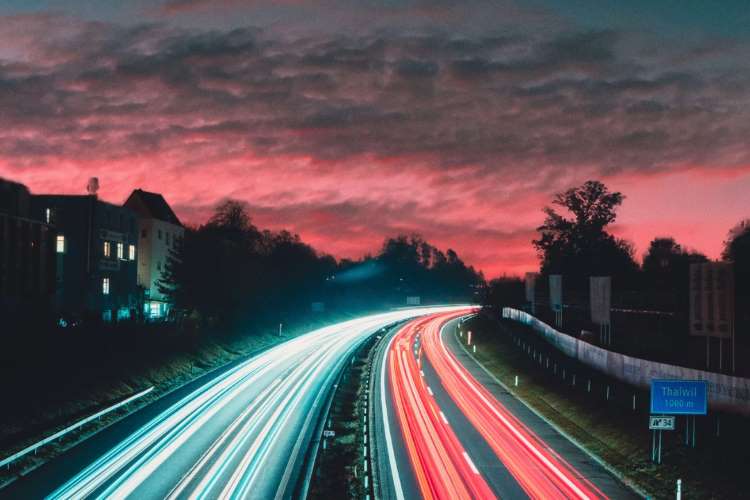
BRI: The G7 summit held last week in Germany has finally cleared the grouping’s $600 billion plan, called Partnership for Global Infrastructure and Investment (PGII). The project looks to rival the Belt and Road Initiative, a similar project launched by China. The G7, an alliance comprising Canada, France, Germany, Italy, Japan, the UK and the US, had announced the plan in 2021. The initiative will fund infrastructure projects in developing countries to check Chinese influence in the global economy.
While both projects have the similar objective of mobilising funds for developing key infrastructure, G7 says their initiative will be transparent and focused on building climate change-resilient infrastructure. It says that the project will help achieve the objectives of gender equality and health infrastructure development. Meanwhile, China responded positively to the G7 initiative. Chinese foreign ministry spokesman Zhao Lijian said that the country welcomes all initiatives to promote global infrastructure development, also adding that it believes the initiatives cannot replace each other.
What is Belt and Road Initiative (BRI)
Dubbed as the Silk Route of the 21st century, the multibillion-dollar Belt and Road Initiative was unveiled by President Xi Jinping in 2013. BRI is an ambitious plan to connect Asia, Africa and Europe with overland corridors and maritime routes. The BRI plan initially involved 71 countries which account for almost half of the world’s population and a quarter of the global GDP.
READ ALSO: Vicious circle: Global warming increases methane emissions, says study
As most of these corridors run through low- and middle-income countries, seeking help from Beijing, which can lend vast amounts of money to these cash-starved nations, is imperative. Chinese construction companies are majorly involved in the execution of these big-ticket infrastructure projects such as ports, highways and railway lines.
The BRI was launched with the objective of giving a tailwind to the slowing Chinese economy and is seen as a step towards Chinese dominance over the world economy. The cost of the Belt and Road Initiative is pegged at $1 trillion. According to one analysis, China has already invested more than $210 billion, most of it in Asian countries.
Why is G7 worried about BRI
It all sounds pretty on paper until one considers a report which painted an alarming picture of the debt owed by countries due to the BRI project. According to an AidData analysis, there are more than 13,000 aid- and debt-financed projects worth more than $843 billion across 165 countries over a period of 18 years till the end of 2017. Over $385 billion is owed to China. Of this, 42 countries have debt higher than 10% of their GDP. This includes low- and middle-income countries such as Laos, Papua New Guinea, the Maldives, Brunei, Cambodia and Myanmar.
The actual amount owed to China is substantially higher than what is estimated by global credit agencies and financial institutions. However, the true size of the debts remains unknown as China has now started to offer loans to private entities while it earlier used to lend directly to governments and had the loans publicly declared.
While China gladly extends loans to countries that are considered high risk, it is a tough money lender with tough terms. Consider Pakistan, which takes loans from China at a high interest rate of 3.76% compared with the typical rate of 1.1% charged by international financial institutions. China lures and traps these countries, putting the collateral (typically physical assets) of such countries at risk.
Take for example the Maldives which owes $1.4 billion, which amounts to 78% of the nation’s total external debt. Montenegro, a Balkan country, borrowed $1.5 billion to build a highway. If it defaults, it has to give up vast tracts of land.
PGII explained
Since its announcement last year, the PGII is being viewed as G7’s answer to China’s Belt and Road Initiative, which critics have termed a debt trap not just for its allies but for China itself. The PGII is likely to benefit developing countries in four core areas viz healthcare, digital connectivity, gender equality and equity, and climate and energy security.
US is expected to mobilise $200 billion over a span of next five years towards the PGII initiative. he European Union has also declared its aim to mobilise €300 billion in investments for the PGII by 2027. With PGII, G7 looks to avoid and manage future pandemics with G7 member states planning to invest in industrial-scale vaccine manufacturing facilities in the developing world under the healthcare plank of the PGII.
Another goal is to enhance digital connectivity. To that end, the PGII intends to secure digital network equipment for Africa, Asia and Latin America.
What is in for India with PGII?
US development bank International Development Finance Corporation has pledged to invest upto $30 million in the Omnivore Agritech and Climate Sustainability Fund 3. The impact venture capital fund will invest in entrepreneurs who are working towards building the future of agriculture, food systems, climate and the rural economy, according to a statement by the White House. The fund will also aid companies which aim at increasing food security and promoting both climate resilience and climate adaptation in India, as well as improve the profitability and agricultural productivity of smallholder farms.
Moreover, according to analysts, the PGII is likely to benefit developing countries such as India by offering finance for decarbonisation efforts. This becomes especially significant in the wake of rising temperatures due to global warming and considering that India was one of the worst hit countries by heatwaves this summer. Stating that the aid isn’t a charity or donation, the US President Joe Biden said that the efforts made under the PGII initiative are likely to give returns to everyone.
India stayed away from the Belt and Road Initiative as it included the China-Pakistan Economic Corridor connecting Kashgar in China with the Gwadar port in Pakistan via Pakistan-occupied Kashmir. India’s external affairs minister S. Jaishankar had said then that such serious connectivity initiatives must be transparent and should conform to the most basic principle of respect for sovereignty and territorial integrity.
Prachi Gupta is an Assistant Editor with Policy Circle. She is a post graduate in English Literature from Lady Shri Ram College For Women, Delhi University. Prachi started her career as a correspondent with financialexpress.com. She specialises in policy impact studies.

